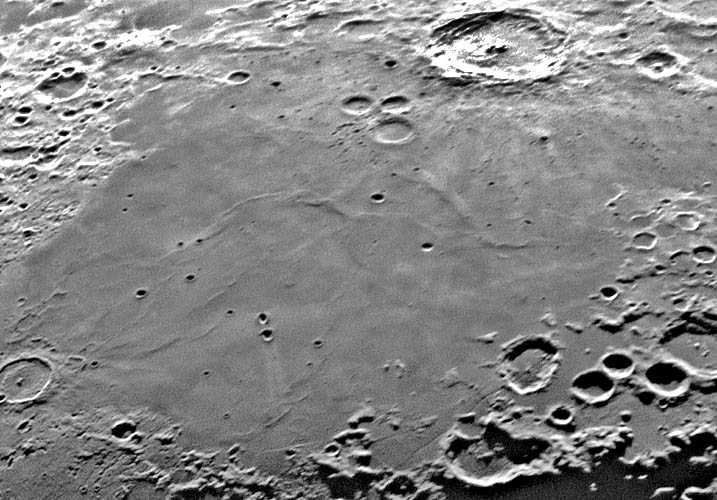A Shallow Sea of Lava

Explanation:
Mare Fecunditatis lavas are assumed to fill an impact basin because
that is the case for nearly every other roughly circular pile of lava on the Moon.
But there is little evidence for the basin, except some curved ridges that might
represent an inner ring. Based on the extent of the mare, the Fecunditatis Basin
is about 690 km wide. Probably most of the time Fecunditatis is observed the target
is the bizarre ricochet craters Messier and Messier A. And often observers are attracted
to Langrenus at the top right, and less frequently to Taruntius (bottom left) or
the Goclenius rilles (bottom right). Clementine images in various wavelengths have
allowed researchers to assemble mosaics whose colors represent chemical compositions
of the soils of Fecunditatis. The majority of the Mare is low-Titanium basalts, but
there are smaller amounts of higher Titanium basalts that are the youngest flows.
Luna 16 landed west of Webb and the returned samples have ages of about 3.3 b.y.
The thickness of the Fecunditatis lavas was estimated from the spectral colors of
impact crater ejecta. Craters that excavated into the underlying highlands have a
distinctive color. And because the depths of craters can be estimated from their
diameters, it is easy to estimate how deep the lavas are. In general, Mare Fecunditatis
lavas are thin, about 200 m thick, with the greatest depths being 400-500 m.
—
Chuck
Wood
Technical Details:
May 13, 2005. Jose Olivarez's 10" f/16 refractor + Nikon Coolpix 4300 + Maxview 40
eyepiece + 2X Barlow.
Related Links:
Rukl Plates 37, 48 and 59
D. Rajmon & P.Spudis (2004) Distribution and stratigraphy of basaltic units in
Maria Tranquillitatis and Fecunditatis: A Clementine perspecttive. Meteoritics &
Planetary Science 39, 1699-1720.
